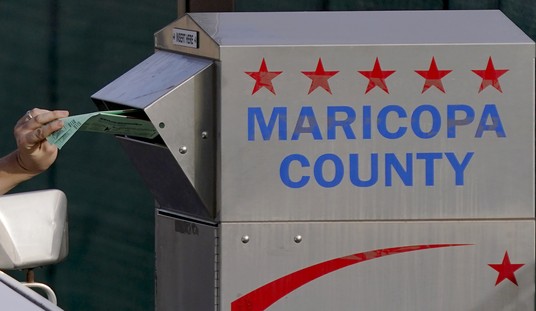Those who understand self-defense law knew the verdict in State of Florida vs. George Zimmerman was assured as long as the jury made their decision based upon the law.
Why?
Let’s start with what constitutes an “aggressor” in a conflict. Aggressor is not a fixed state. For example, the individual who throws the first punch may be the initial aggressor, but may not be the aggressor throughout the length of the conflict. It is possible for conflicts to ebb and flow, to go from verbal to physical and back again. If a fight continues long enough, it is possible that the person who is the aggressor may change from one person to the other several times.
In a self-defense case, the later stages of a confrontation may be more relevant to determining who reasonably feared for his life than the beginning stages. The jury can take the whole incident into account, but may give more weight to determining the “aggressor” at the moment that deadly force was employed.
The prosecutors did not attempt to try this case based upon the principles of self-defense law in order to convict George Zimmerman of violating that law. In their 40-witness prosecution case, they made no attempt to address whether Zimmerman was legitimately in fear of his life or not. Instead, the prosecution of George Zimmerman by the state was primarily one of character assassination and innuendo, and built upon assertions and vitriol. They asserted that frustrated curse words delivered in a flat monotone and following someone in public — neither of which is remotely illegal — were evidence of a crime. They never argued the facts or the law, as they knew the facts and the law supported Zimmerman’s self-defense claim.
In the case of the conflict between Trayvon Martin and George Zimmerman, what happened prior to their meeting face-to-face — which the prosecution focused on — has relevance, but did not reasonably carry much weight. Zimmerman broke no laws in following Trayvon Martin in public at a distance. Zimmerman broke no laws if he did as Rachel Jeantel suggested — walk up to Trayvon Martin and ask “what are you doing here?” or similar words to that effect. Similarly, Trayvon Martin broke no laws if he came up from behind George Zimmerman and asked: “What you following me for?”
At this point, neither men has done anything remotely illegal. If they had continued talking, it is quite likely that George Zimmerman would have found out that Trayvon Martin had every right to be there — even if he was mildly “on drugs,” as Zimmerman correctly behaviorally profiled him (according to medical examiner Bao’s toxicology reports). Both men would have continued on with their lives, and probably never would have interacted again.
Of course, that isn’t what happened. We know for a fact that the verbal confrontation became a physical confrontation at some point.
Zimmerman asserts that Trayvon sucker-punched him, and that the initial strike broke his nose. Frankly, even this carries little weight in relation to the self-defense law of this case. Nothing up until this point carries much weight, because nothing either man had done up until this point remotely approaches deadly force.
Self-defense law isn’t relevant through the scramble for position that takes the men away from the “T” intersection, and to the eventual positioning of Trayvon Martin mounted upon George Zimmerman. Up until this point, Trayvon Martin was possibly guilty of felony battery, but he had not done anything justifying a lethal-force response.
Note: a punch can be considered deadly force to a reasonable jury. I don’t believe this first punch rose to that level. Only after Trayvon Martin had firmly established a mounted position of control dominating George Zimmerman did the actions of Trayvon Martin against George Zimmerman start building a legal justification for the use of deadly force.
When Trayvon first bounced Goerge Zimmerman’s head off the concrete by either punching his head and driving it into the concrete, or by more intentionally grabbing his head and smashing it against the concrete, the very first blow — no matter how hard the strike — was the legal justification for the use of deadly force.
Self-defense law is not predicated upon sustaining injuries. In another circumstance, you would not have to wait for someone wielding a knife to finally stab you, or allow a man with a gun to keep shooting at you until he finally makes a hit before you respond. Trayvon Martin’s first attempt to slam George Zimmerman’s head into the concrete was assault with a deadly weapon, whether he successfully connected or not.
We know, of course, from the testimony of PA Lindzee Folgate, Dr. Valerie Rao, and the forensic pathologist that Trayvon Martin successfully hit George Zimmerman’s head on the concrete sidewalk with varying levels of force numerous times.
We know from the testimony of eyewitness John Good and George Zimmerman and the botched identification of Jane Surdyka that Trayvon Martin was the “final aggressor” in this conflict. He had established a powerful dominant position that left George Zimmerman nearly defenseless.
Trayvon Martin was able to deliver punishment at will, and chose to use concrete, a deadly weapon.
He refused to stop as George Zimmerman offered no effective resistance. He refused to stop as George Zimmerman screamed for help. He refused to stop when John Good told him to stop — John Good then went back inside to call 911.
Self-defense law is based upon a reasonable person standard when determining the legitimate use of deadly force. George Zimmerman had offered virtually no effective resistance in a fight 40 seconds long. He was quickly downed and mounted, and suffered repeated punches including having his head smashed against a concrete sidewalk multiple times. He cried for help. Only one neighbor came out at all, and he didn’t intervene. George Zimmerman was under a continuous assault from a much younger, stronger, and relentless opponent. In terrible physical shape — as testified to by his fitness trainer — he was physically unable to fight back, and what little strength he had was ebbing.
Feeling he was about to potentially lose consciousness with the next strike of his head against concrete, and with neighbors around him refusing to offer any assistance at all, George Zimmerman must have felt something like Kitty Genovese, who was stabbed to death over a period of time in Queens, New York, in 1964 as her neighbors ignored her cries for help.
As use-of-force expert Dennis Root testified that George Zimmerman had “no choice” but to match Trayvon Martin’s lethal force attack to save his own life.
Fortunately for him, George Zimmerman had one advantage over Kitty Genovese. He had a Kel-Tec PF9 pistol tucked into a black nylon holster inside the waistband of his pants, just behind his right hip. He either twisted to his left a small amount or raised his hips in a maneuver known as a “bridge” just long enough to slip his hand into his holster and to draw his pistol. Forensic pathologist Vincent Di Maio — who wrote the book Gunshot Wounds used by pathologists and medical examiners — says the evidence shows Trayvon Martin was still in an attacking position when George Zimmerman tucked his elbow against his body and fired his gun one time as it touched Trayvon Martin’s shirt.
The expanding gasses from the fired cartridge pushed past the bullet, and it was actually these gasses which ripped a hole through Trayvon Martin’s clothes and stippled his chest four inches away. An instant later, the bullet followed and penetrated Trayvon Martin’s chest, ending his life minutes later.
It was a horrible turn of events, and an avoidable turn of events. It could not have happened if either man had acted even slightly differently that night. From a self-defense law perspective, however, the shooting of Trayvon Martin was not ambiguous.
Angela Corey, Bernie de la Rionda, John Guy, and Richard Mantei knew, as did two previous potential prosecutors, that there was no valid criminal case to bring against George Zimmerman. It was a textbook self-defense shooting. That is why they brought the slanderous, deceptive, and circumstantial case that they did.
Trayvon Martin was the first and only person who committed crimes that rainy February night. As Mark O’Mara noted during his closing: if Trayvon Martin had survived his shooting, George Zimmerman would have never faced charges, and Trayvon would have faced a long prison sentence, tried as an adult for two counts of aggravated battery.
There are no “winners” in a case such as this, but the jury’s reliance on the laws of self-defense and use of deadly force assured that a corrupt prosecution did not, as defense attorney Don West stated, “turn a tragedy into a travesty.”









Join the conversation as a VIP Member